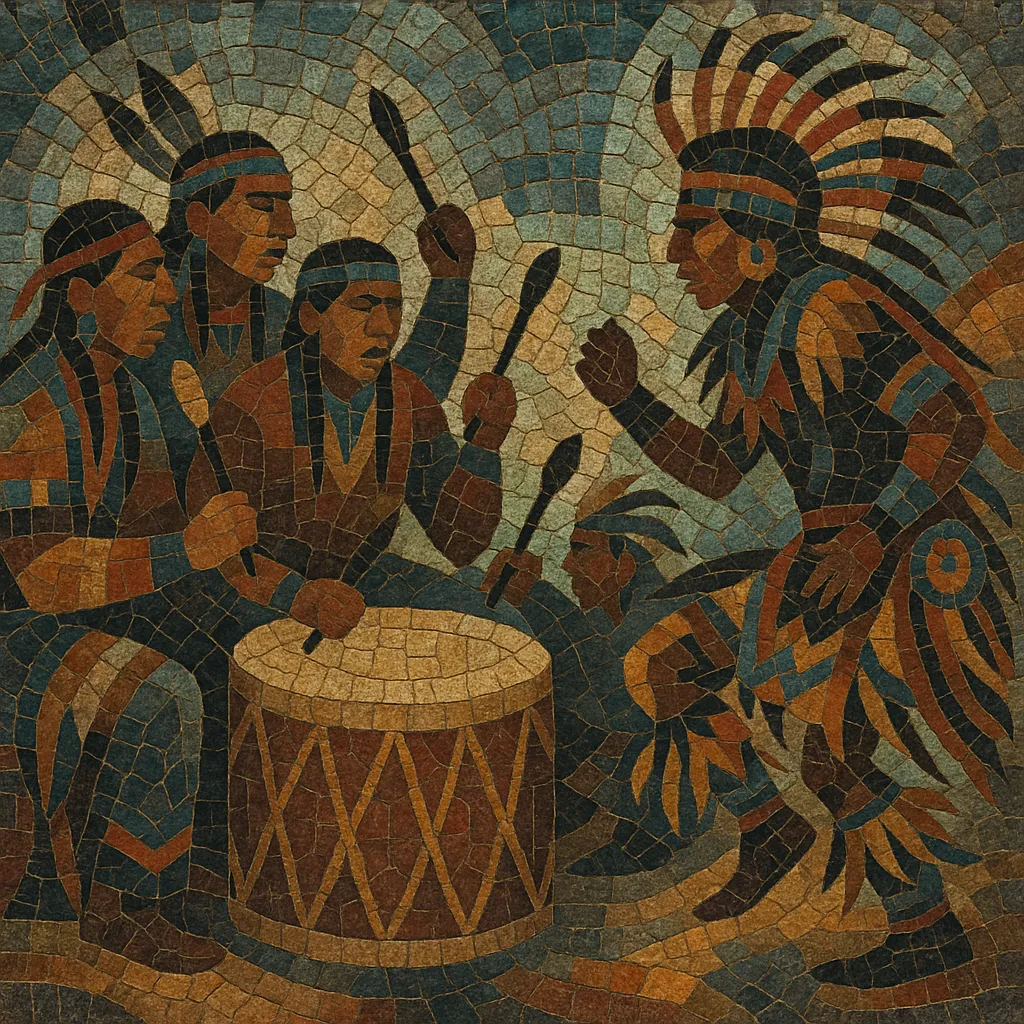
Powwow music is the intertribal social dance and song tradition of many Native nations of the Great Plains and, by the 20th century, across North America. It centers on a large powwow drum played by a circle of singers who perform high-energy, call-led songs with vocables and occasional Native-language lyrics.
Two principal regional styles are often recognized: Northern Plains (higher vocal tessitura, faster average tempos) and Southern Plains (lower vocal range, heavier drum stroke). Songs are organized in "push-ups" (repeated cycles led by a soloist and answered by the group), with characteristic honor beats that cue dancers and mark form. Repertoires include intertribal, grand entry, flag and veterans’ songs, men’s and women’s contest songs, and honor and memorial songs.
Beyond its musical traits, powwow music functions as a living social practice—honoring veterans and community leaders, reaffirming identity, and fostering intertribal connections at gatherings that blend ceremony, celebration, and competition.
Powwow music emerged in its modern, intertribal form in the late 1800s among Plains Nations in the United States during and after the reservation era. While dance societies and drum-centered song traditions long predate this period, the late 19th century saw new intertribal gatherings develop, with songs and dance categories becoming shared across communities.
By the early 1900s, regional styles coalesced—especially the Northern and Southern Plains approaches—while powwows spread beyond their original Plains homelands. Songs used vocables for inclusivity across languages and clear dance cues (e.g., honor beats), enabling dancers from different nations to participate together.
After World War II and into the 1960s–70s (alongside Red Power and cultural revitalization), powwows expanded rapidly. Contest powwows formalized judging for drum groups and dance categories, encouraging prolific song creation and standardized forms (such as four push-ups) that suit arena programming.
From the 1970s onward, independent Native-owned labels and later radio and digital platforms documented prominent drum groups, creating a continent-spanning powwow circuit. This circulation strengthened intertribal repertoires while preserving local stylistic nuances.
Contemporary powwow music remains a vibrant social and musical institution. It honors veterans and leaders, welcomes new compositions that observe tradition (lead/second, honor beats, push-ups), and adapts to new venues and media while maintaining community-centered protocols and respect.

